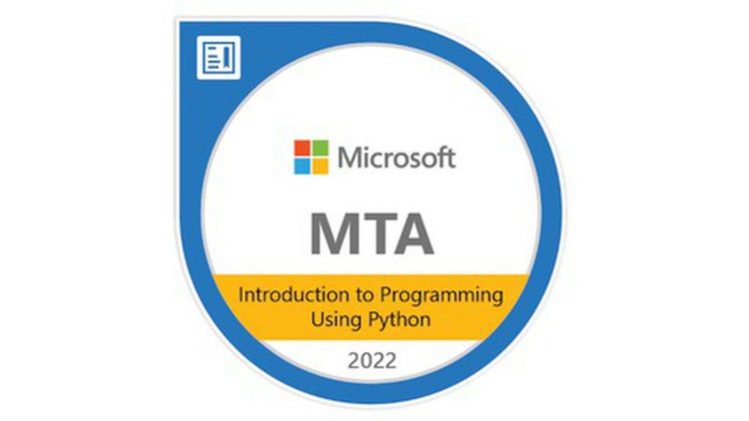
Now is the time to get certified for Python!
Microsoft MTA 98-381: Introduction to Programming Using Python
Every question has an explanation and a Try-It-Yourself-Code
which you can run to better understand the topic.
You can download the Try-It-Yourself-Code for all questions.
(The download link will be in your welcome message.)
There are six Practice Tests with preparation questions from all knowledge areas.
Exam Syllabus
Perform Operations using Data Types and Operators
- Evaluate an expression to identify the data type Python will assign to each variable:
identify str, int, float, and bool data types - Perform data and data type operations:
convert from one data type to another type; construct data structures; perform indexing and slicing operations - Determine the sequence of execution based on operator precedence:
assignment; comparison; logical; arithmetic; identity (is); containment (in) - Select the appropriate operator to achieve the intended result:
assignment; comparison; logical; arithmetic; identity (is); containment (in)
Control Flow with Decisions and Loops
- Construct and analyze code segments that use branching statements:
if; elif; else; nested and compound conditional expressions - Construct and analyze code segments that perform iteration:
while; for; break; continue; pass; nested loops and loops that include compound conditional expressions
Perform Input and Output Operations
- Construct and analyze code segments that perform file input and output operations:
open; close; read; write; append; check existence; delete; with statement - Construct and analyze code segments that perform console input and output operations:
read input from console; print formatted text; use of command line arguments
Document and Structure Code
- Document code segments using comments and documentation strings:
use indentation, white space, comments, and documentation strings; generate documentation by using pydoc - Construct and analyze code segments that include function definitions:
call signatures; default values; return; def; pass
Perform Troubleshooting and Error Handling
- Analyze, detect, and fix code segments that have errors:
syntax errors; logic errors; runtime errors - Analyze and construct code segments that handle exceptions:
try; except; else; finally; raise
Perform Operations Using Modules and Tools
- Perform basic operations using built-in modules:
math; datetime; io; sys; os; os.path; random - Solve complex computing problems by using built-in modules:
math; datetime; random
Why learn Python?
Python is easy to learn. The syntax is simple and the code is very readable. With Python, you can write programs in fewer lines of code than with most other programming languages. The popularity of Python is growing rapidly. It is now one of the most popular programming languages. Python has a wide variety of applications. It is used for automation, web application development, artificial intelligence, data science and so on:
Automation
Python can make life easier by automating many tasks, such as scraping a website to collect data, automating test cases in software development, or automating everyday office tasks. Python can easily access and read all kinds of files, which opens up the possibility of saving a lot of time by automating repetitive tasks.
Web Development
Python is a good choice for rapid web application development. With many frameworks like Django, Pyramid, and Flask, you can develop web applications with great speed using Python. Python is used on the server side of web development. You can use Python to interact with database and create RESTful API services.
Artificial Intelligence
The near future will be the era of artificial intelligence. In the past, computers and machines were used to perform mathematical calculations at very high speeds, but now many large organizations and researchers are working to develop intelligent systems that can perform tasks like a human. To some extent, machines are able to understand human emotions and their natural language. They can mimic certain human actions that were not possible before. Again, Python is very popular for developing AI systems.
Data Science
Earlier, Python was mainly used to build applications and write scripts to automate tasks, but now a brand new trend of data science has given Python an even bigger boost. Data scientists are heavily dependent on Python because it is so simple, has a large community, and can perform huge calculations with ease.
Python is being used in a wide variety of fields, and there are no signs that this trend is coming to a halt. It’s safe to say that Python is here to stay for the long haul in this ever-changing and evolving IT industry.






